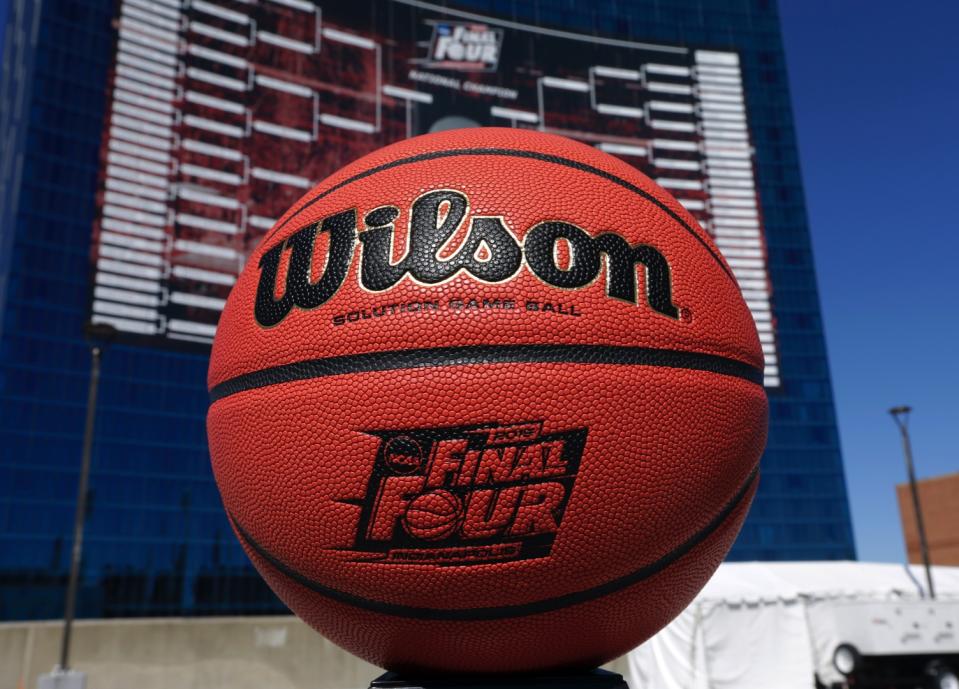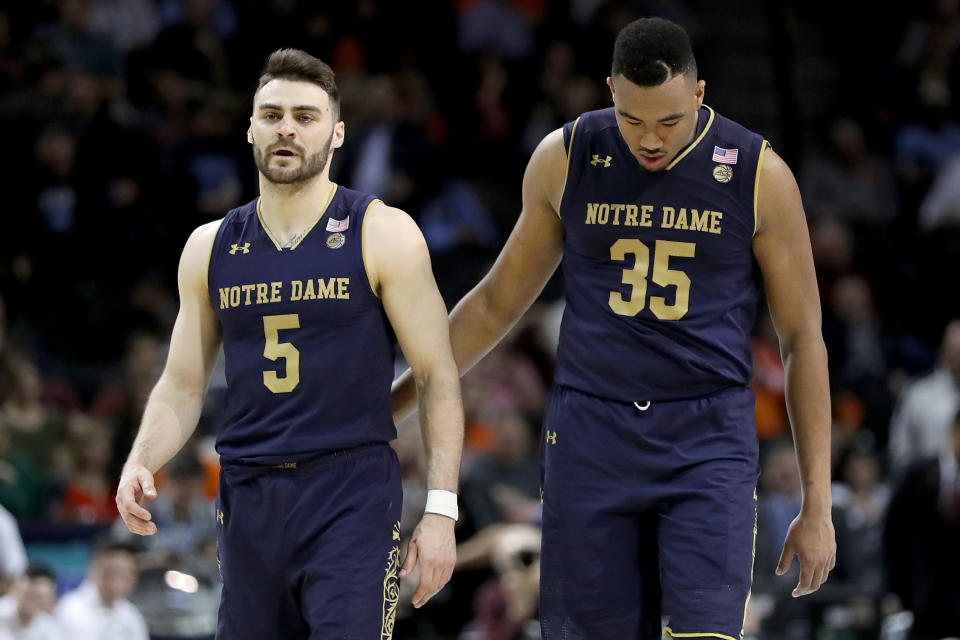Five tough decisions the NCAA tournament selection committee must make

Sometime before 6 p.m. ET on Sunday, the NCAA tournament selection committee will email TBS executives a completed bracket to unveil on the selection show. Below is a look at some of the most difficult decisions the committee must make between now and then:
1. Who are the four No. 1 seeds?
Selecting the four No. 1 seeds became a lot easier for the committee when neither Duke nor North Carolina won the ACC tournament.
The Blue Devils and Tar Heels falling out of contention essentially leaves only four realistic candidates for the top seed line.
Virginia (31-2) is a lock to claim the NCAA tournament’s No. 1 overall seed after winning the ACC title by four games and following that up by also sweeping through the league tournament. The Cavaliers boast a remarkable 12-1 record against quadrant 1 opponents highlighted by a pair of victories over North Carolina and a road win at Duke.
Villanova (30-4) and Kansas (27-7) also left no doubt that they deserve No. 1 seeds by winning their conference tournaments.
The Wildcats finished second in the Big East regular season title race, but they make up for that with a 18-3 against the top two quadrants including a sweep of Xavier and marquee non-league wins against Tennessee and Gonzaga. The Jayhawks swept both the regular season and tournament titles in the Big 12, a league so deep that nine of its 10 teams are in contention for NCAA bids.
The final No. 1 seed will almost certainly go to Big East regular season champ Xavier even though the Musketeers squandered a 17-point lead against Providence in the conference tournament semifinals. The Musketeers (28-5) boast an impressive 11 victories against likely NCAA tournament teams, but the fact that only one of those came against a current RPI top 25 team left them vulnerable to being leapfrogged.
What saved the Musketeers is that nobody else worthy came along.
Duke had a chance if it could have added an ACC tournament title and two more big wins, but the Blue Devils (26-7) squandered their chance when they lost to North Carolina in the ACC semifinals. The Tar Heels could have mounted a case too thanks to their national best 14 quadrant 1 victories, but their ACC title game loss to Virginia was their 10th loss of the season, three more than any previous No. 1 seed.
Big Ten champion Michigan State and American champion Cincinnati both have sterling 29-4 records but not enough notable wins. The Spartans have only beaten two NCAA tournament-caliber teams all season. Besides Wichita State and Houston, the best teams the Bearcats have defeated are on the bubble.
2. Is Oklahoma in or out?
Get ready for Oklahoma to secure a bid with room to spare and people to be outraged. The Sooners (18-13, 8-10) still have an NCAA tournament-caliber resume even though they haven’t performed that way for the better part of two months.
Fueled by the brilliance of celebrated freshman Trae Young, Oklahoma won 14 of its first 16 games this season and ascended all the way to No. 4 in the AP poll. The Sooners and their superstar have since faded unfathomably quickly, suffering 11 losses in their final 15 games including an opening-round Big 12 tournament loss to rival Oklahoma State.
The reason Oklahoma is still in surprisingly good position relative to other bubble teams is that the Sooners amassed a strong collection of wins early in the season. Not only do they boast marquee wins over Kansas, Wichita State, Texas Tech, USC and TCU, they also have only lost one game against a non-NCAA tournament contender.
Oklahoma’s six quadrant 1 wins are twice as many as fellow bubble teams UCLA and Louisville have and three times as many as Saint Mary’s can offer. Heck, even a Michigan State team in the running for a top-three seed, only has three quadrant 1 victories.
Selection committee chairman Bruce Rasmussen has frequently said during interviews that he and his colleagues will weigh early-season results just as heavily as those from March.
If Rasmussen sticks up to that promise, expect Oklahoma to be a 9 or 10 seed. And expect whatever team draws the Sooners in the opening round to be ecstatic.

3. Is Notre Dame in or out?
If the selection committee only considers Notre Dame’s season-long resume, the Irish are unlikely to receive a bid. Their 2-9 record against quadrant 1 opponents is worse than most other bubble teams and their three losses against sub-100 RPI opponents don’t bode very well either.
For Notre Dame to have realistic hope, the Irish need the committee to take into account the rash of midseason injuries they endured and then assess whether they performed like an NCAA tournament-caliber team at full strength.
Standout point guard Matt Farrell sat out five ACC games and was hobbled during several more as a result of a bone bruise in his ankle. Preseason All-American forward Bonzie Colson missed 15 games after suffering a fractured foot in December and did not return until the final week of ACC play.
Notre Dame can point to going 14-5 with both players available, 6-9 without Colson and 1-4 when neither played, but the Irish were far from flawless even with their two stars in the lineup. A full-strength Notre Dame team did defeat Wichita State en route to the Maui Invitational title in November, but the Irish also suffered their two worst losses of the season against Ball State and Indiana before Colson and Farrell got hurt.
When Colson returned to Notre Dame’s lineup two weeks ago, the Irish again failed to leave no doubt they were a different team at full strength. They didn’t achieve the style points they needed with a 3-2 finish that included losses to Duke and Virginia, an unfathomably close win over last-place Pittsburgh and a rally from a 21-point deficit to defeat Virginia Tech.
Ultimately, Notre Dame showed it’s a better team with Colson and Farrell, but it may not have done enough to persuade the committee to disregard a flawed resume. Expect the committee to take Notre Dame’s injuries into consideration and leave the Irish out anyway.
4. Where will Gonzaga be seeded?
The toughest team for the committee to properly seed on Sunday could be last year’s national runner-up. Gonzaga is problematic because it boasts a gaudy 30-4 record and favorable predictive metrics yet it lacks the long list of quality wins other elite teams have as validation.
Despite losing four of its top eight players from last year’s 37-win juggernaut, Gonzaga performed well once again out of conference, edging full-strength Texas in overtime and routing Ohio State, Creighton and Washington. The Zags’ only losses were by 16 to Villanova, in double overtime to Florida and by two at San Diego State.
The West Coast Conference offered Gonzaga little competition as seven of the league’s nine other teams finished well outside the RPI top 100. The Zags tore through the regular season and conference tournament with startling ease, winning 20 of 21 games by an average of 19.7 points.
Gonzaga enters Selection Sunday with an 8-4 record against the top two quadrants and a 22-0 record against the bottom two. The KenPom rankings and the other major predictive metrics all have the Zags in the top 10 in the country, but they’re only 22nd in the strength-of-schedule-heavy RPI.
When seeding Gonzaga, the selection committee has to consider not just the consequences for the Zags but also for their potential opponent. How would you like to earn a No. 3 or 4 seed and have to face KenPom’s No. 8 team in the second round?
Ultimately, the committee would be wise to give Gonzaga a No. 4 seed. It splits the difference between the Zags’ RPI and predictive metrics and avoids putting another top-four seed in an unfair position during the first two rounds of the tournament.
5. Which team will miss the field if Davidson becomes a bid thief?
Whoever the last at-large team in the selection committee’s field is right now may not remain in that spot by the time the bracket is unveiled.
That team could be squeezed out if third-seeded Davidson upsets top-seeded Rhode Island in the Atlantic 10 title game.
The Atlantic 10’s automatic bid to the NCAA tournament will go to the winner of its title game. Rhode Island (25-6) would be a lock to receive an at-large bid if it loses on Sunday, but Davidson (20-11) does not have a strong enough resume to make a case if it doesn’t beat the Rams.
The drama of Sunday: One team is the biggest Rhode Island fan in the world tomorrow. A Davidson win knocks them out. (And no, I can't tell you who that is.) Find out at 6 p.m. ET with the selection show in TBS.
— David Worlock (@DavidWorlock) March 11, 2018
Which bubble team’s spot in the field would vanish if Davidson wins and the Atlantic 10 claims an extra bid? An educated guess is that Saint Mary’s, Arizona State, Louisville and Oklahoma State would have the most to worry about.
Each of those teams project to be right on the cut line tomorrow. And each of those teams should be pulling hard for Rhode Island as a result.
– – – – – – –
Jeff Eisenberg is a college basketball writer for Yahoo Sports. Have a tip? Email him at daggerblog@yahoo.com or follow him on Twitter!



